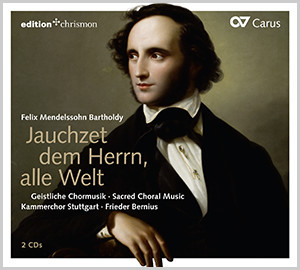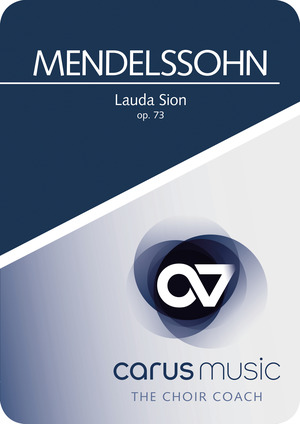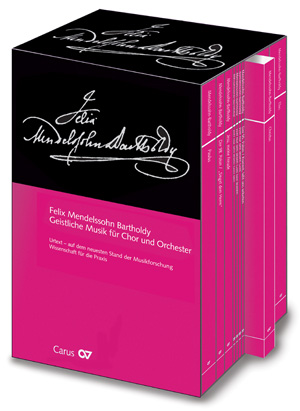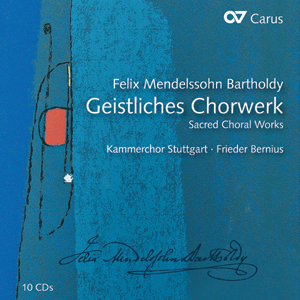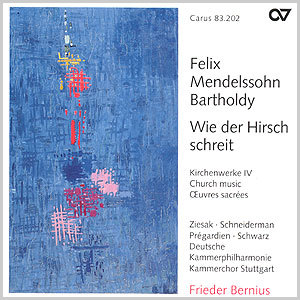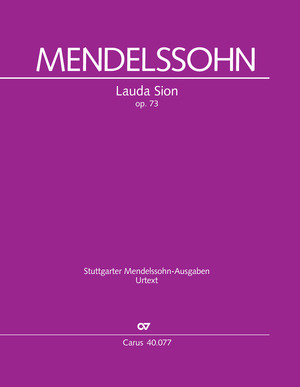
Contents
-
Composer
Felix Mendelssohn Bartholdy
| 1809-1847
-
Editor
R. Larry Todd
Prof. Dr. R. Larry Todd ist Arts & Sciences Professor of Music, Duke University, Durham. Bei Carus hat er zahlreiche Werke von Mendelssohn herausgegeben, darunter die Oratorien Elias, Paulus sowie Christus. Seine bei Carus in deutscher Sprache erschienene Mendelssohn-Biografie ist zumStandardwerk für Forschung und Mendelssohn-Fans geworden.
Personal details
Reviews
Mendelssohn Bartholdy, Felix: Lauda Sion
Mendelssohn Bartholdy, Felix: Lauda Sion
[ ] Kirchenmusik (bzw. Chormusik) total dieser Komponisten hat sich der Stuttgarter Carus-Verlag aufs Panier geschrieben. Seine über zwanzig Jahre anhaltenden, verdienstvollen Bemühungen um Felix Mendelssohn Bartholdy haben viele Werke erstmalig - der Verlagsprospekt spricht von 39 Erstveröffentlichungen - oder wieder in praktischen Ausgaben zugänglich gemacht. [ ]
Fragt man sich nach Vorbildern für Mendelssohns kirchenmusikalisches Schaffen, denkt man vor allem an Bach und Händel, als deren legitimer Erbe im 19. Jahrhundert er galt. Dass aber auch Palestrina, die italienische Mehrchörigkeit, ja sogar Cherubini ihre Spuren hinterlassen haben, ist weniger im Bewusstsein. Letzterer stand Pate für die Vertonung der Fronleichnamssequenz „Lauda Sion”, entstanden ein Jahr vor Mendelssohns Tod während der Arbeit am „Elias”. Wie in den Psalmen bestreitet der Chor den Hauptanteil des Stückes, er hat in sechs von acht Nummern zu singen. Der Chorpart ist leichter als in den meisten vergleichbaren Werken. Von den Solisten ist der Sopran in zwei Nummern allein beschäftigt, zwei weitere verlangen ein Solistenquartett, das vorwiegend homophon geführt ist. Dazu klassische Orchesterbesetzung mit drei Posaunen, Aufführungsdauer etwa eine halbe Stunde, Was mir besonders sympathisch ist: das Stück verzichtet auf die obligatorische auftrumpfende Schlussfuge und endet in einem schwungvollen und doch lyrischen Wechselgang zwischen Solistenquartett und Chor.
Helmut Wolf
Quelle: Württembergische Blätter für Kirchenmusik 1/1997, S. 40
Frequent questions about this work
 There are no questions and answers available so far or you were unable to find an answer to your specific question about this work? Then click here and send your specific questions to our Customer Services!
There are no questions and answers available so far or you were unable to find an answer to your specific question about this work? Then click here and send your specific questions to our Customer Services!


